
Tetris Attack, also known as Panel de Pon in Japan, is a puzzle video game developed by Intelligent Systems and published by Nintendo for the Super Nintendo Entertainment System. A Game Boy version was released a year later. In the game, the player must arrange matching colored blocks in vertical or horizontal rows to clear them. The blocks steadily rise towards the top of the playfield, with new blocks being added at the bottom. Several gameplay modes are present, including a time attack and multiplayer mode.

Pokémon Puzzle League is a puzzle video game in the Puzzle League series developed by Nintendo Software Technology and published by Nintendo for the Nintendo 64. Released in North America on September 25, 2000, and in Europe on March 2, 2001, its Puzzle League-based gameplay has a focus on puzzle-based strategy in the game's grid-based format. To advance to new levels, players are required to combat the game's trainers and gym leaders, similar to the ones featured in Pokémon Red, Blue, and Yellow. One of several games based on the Pokémon anime, it features lead protagonist Ash Ketchum, his Pikachu, his companions Brock and Misty, the Kanto Gym Leaders, and other characters from the series.

Dr. Robotnik's Mean Bean Machine is a falling block puzzle game developed by Compile and published by Sega. It was released for the Sega Genesis / Mega Drive in North America and Europe in November 1993, and ported to the Game Gear in 1993 and Master System in 1994.
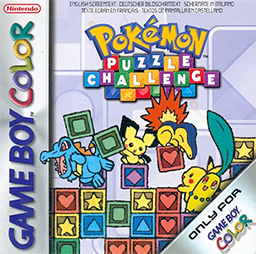
Pokémon Puzzle Challenge is a puzzle video game developed by Intelligent Systems and published by Nintendo for the Game Boy Color. Released in Japan on September 21, 2000; in North America on December 4, 2000; and in PAL regions on June 15, 2001, it is the second Pokémon-themed entry in the Puzzle League series. While its Nintendo 64 counterpart Pokémon Puzzle League is visually based on the Pokemon anime, Puzzle Challenge instead draws inspiration from the Pokémon Gold and Silver games. The game features multiple modes of play and support for competitive play between two players. Puzzle Challenge was later digitally re-released via the Nintendo 3DS's Virtual Console line on November 6, 2014.

Puyo Pop Fever is a 2003 puzzle video game developed by Sonic Team and published by Sega. It is the fifth main installment in the Puyo Puyo puzzle game series and the second Puyo Puyo game to be programmed by Sonic Team after Puyo Pop. This was the start of the what can be considered a reboot of the Puyo Puyo franchise, with this entry's plot revolving around Professor Accord losing her flying cane. Sega, which acquired the series' rights from Compile in 1998, published all the Japanese releases of the game, and also published the arcade and GameCube versions internationally. The game was scarcely released internationally, and certain versions were released by other publishers in those areas. Only the arcade, GameCube, and Nintendo DS versions were released in North America. Europe received all three versions plus the PlayStation 2, Xbox, Game Boy Advance, and PlayStation Portable versions. The Dreamcast version, released exclusively in Japan, was the last Dreamcast game developed by Sonic Team, the last first-party title released on the platform, as well as the final first-party title by Sega. was ported from the arcade version. The Dreamcast version is the only console version to use sprites in place of 3D models.
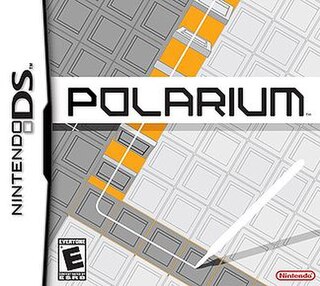
Polarium is a puzzle game developed by Mitchell Corporation and published by Nintendo for the Nintendo DS. It was a launch title in Japan, Europe and China. In the game, players use a stylus to draw lines on the DS's touch screen, flipping black and white tiles to clear puzzles.

Super Puzzle Fighter II Turbo, released in Japan as Super Puzzle Fighter II X, is a tile-matching puzzle video game released in 1996 for the CP System II (CPS2) arcade board, by Capcom and its Capcom Coin-Op division. The game's title is a play on Super Street Fighter II Turbo, as there were no other Puzzle Fighter games at the time, and the game includes music and interface elements spoofing the Street Fighter Alpha and Darkstalkers games. It was a response to Sega's Puyo Puyo 2 that had been sweeping the Japanese arcade scene.

Tetrisphere is a puzzle video game developed by H2O Entertainment and published by Nintendo for the Nintendo 64. It was released in North America on August 11, 1997, and in PAL regions in February 1998. The game, originally named Phear, was slated for release on the Atari Jaguar in early 1995, but was reworked into a Tetris game for the N64 after Nintendo obtained its publishing rights.

Pac-Attack, also known as Pac-Panic, is a 1993 falling-tile puzzle video game developed and published by Namco for the Super Nintendo Entertainment System and Sega Genesis. Versions for the Game Boy, Game Gear and Philips CD-i were also released. The player is tasked with clearing out blocks and ghosts without them stacking to the top of the playfield — blocks can be cleared by matching them in horizontal rows, while ghosts can be cleared by placing down a Pac-Man piece that can eat them. It is the first game in the Pac-Man series to be released exclusively for home platforms.
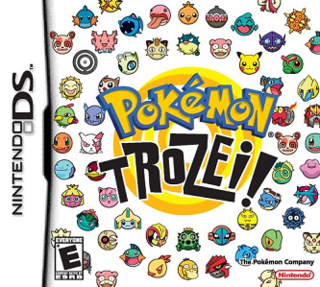
Pokémon Trozei! is a Pokémon-themed puzzle video game for the Nintendo DS developed by Genius Sonority and published by Nintendo and The Pokémon Company. It was released in Japan on October 20, 2005, in North America on March 6, 2006, in Australia on April 28, 2006, and in Europe on May 5, 2006. Trozei is a Romanization of its Japanese title Torōze, meaning "Let's get/take (Pokemon)".

Tetris DS is a puzzle video game developed and published by Nintendo. It was released for the Nintendo DS on March 20, 2006, in North America, April 13, 2006, in Australia, April 21, 2006, in Europe, and April 27, 2006, in Japan. An installment of the Tetris franchise, the game supports up to ten players locally, and supported online multiplayer of up to four players using Nintendo Wi-Fi Connection prior to its discontinuation.
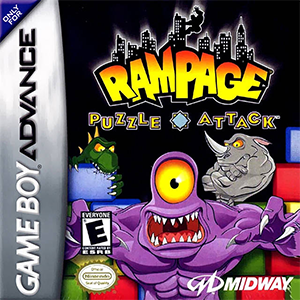
Rampage Puzzle Attack is a puzzle game for Game Boy Advance, developed by Finnish development house Ninai Games and published by Midway Games.

Magical Tetris Challenge is a puzzle game by Capcom for the Nintendo 64, Game Boy Color, and PlayStation. It is a version of Tetris featuring Disney characters. It is one of the few Nintendo 64 games to be entirely in 2D.
Konductra is a puzzle game for the Nintendo DS published by O~3 Entertainment. The game had an interesting development cycle, with IGN revealing the title on November 23, 2005. At the time independent developer oeFun had started work without having a publisher lined up. oeFun and O~3 came into a publishing agreement in the summer of 2006 after the title was finished.
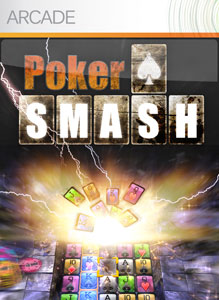
Poker Smash is a puzzle game developed by American independent software developer Void Star Creations for the Xbox 360's Xbox Live Arcade service and iPhone OS. The title was officially announced during Microsoft's E3 2007 press conference and was released on February 6, 2008. A Microsoft Windows release was announced for 2013, but never happened.
Puzzle League, known as Panel de Pon in Japan, is a series of video games published by Nintendo for its various video game consoles. The series began with Panel de Pon in Japan, named Tetris Attack in North America, and has since been adapted to many other consoles. The core gameplay of each version is the same in each game, but branding, presentation details and console-specific features have varied.

Koro Koro Puzzle Happy Panechu! is a puzzle video game software developed and published by Nintendo for the Game Boy Advance. It was released only in Japan on March 8, 2002. It is the first Game Boy Advance title that uses a tilt-sensor chip.

Tetris Party is a puzzle video game by Hudson Soft for WiiWare. An installment of the Tetris series, the game supports the use of Miis and the Wii Balance Board, and features both local and online multiplayer in addition to several single-player modes unique to the game.

Tetris Friends was an online Tetris game developed by Tetris Online, Inc. Registered users were able to compare their scores with their friends and with the entire community. It was the only official Flash implementation of Tetris made by the Tetris company itself. At the time, it was also the only official Tetris platform that had advertisements play before a match. Tetris Friends had over a million registered users.

A tile-matching video game is a type of puzzle video game where the player manipulates tiles in order to make them disappear according to a matching criterion. In many tile-matching games, that criterion is to place a given number of tiles of the same type so that they adjoin each other. That number is often three, and these games are called match-three games.


















